Projection markovienne de processus stochastiques
Projection markovienne de processus stochastiques
Projection markovienne de processus stochastiques
You also want an ePaper? Increase the reach of your titles
YUMPU automatically turns print PDFs into web optimized ePapers that Google loves.
tel-00766235, version 1 - 17 Dec 2012<br />
Proof. By a result of Mikulevicius and Pragarauskas [77, Theorem 5], the<br />
martingale problem is well-posed. We only need to prove that the continuity<br />
property (2.5) holds on [t0,T[ for any x0 ∈ R d . For f ∈ C ∞ 0 (R d ),<br />
Qt0,tf(x0) = E Qt 0 ,x 0 [f(Xt)]<br />
= f(x0)+E Qt 0 ,x 0<br />
t<br />
t0<br />
<br />
Lsf(Xs)ds .<br />
Given Assumption 2.1, t ∈ [t0,T] ↦→ t<br />
0 Lsf(Xs)ds is uniformly boun<strong>de</strong>d on<br />
[t0,T]. By Assumption 2.2, since X is right continuous, s ∈ [t0,T[↦→ Lsf(Xs)<br />
is right-continuous up to a Qt0,x0-null set and<br />
lim<br />
t↓t0<br />
t<br />
t0<br />
Lsf(Xs)ds = 0 a.s.<br />
Applying the dominated convergence theorem yields,<br />
t <br />
Lsf(Xs)ds = 0,<br />
that is<br />
limE<br />
t↓t0<br />
Qt 0 ,x0 t0<br />
limQt0,tf(x0)<br />
= f(x0),<br />
t↓t0<br />
implying that t ∈ [t0,T[↦→ Qt0,tf(x0) is right-continuous at t0.<br />
2.2.2 A uniqueness result for the Kolmogorov forward<br />
equation<br />
An important property of continuous-time Markov processes is their link<br />
with partial (integro-)differential equation (PIDE) which allows to use analytical<br />
tools for studying their probabilistic properties. In particular the<br />
transition <strong>de</strong>nsity of a Markov process solves the forward Kolmogorov equation<br />
(or Fokker-Planck equation) [89]. The following result shows that un<strong>de</strong>r<br />
Assumptions 2.1, 2.2 and 2.3 the forward equation corresponding to L has a<br />
unique solution:<br />
Theorem 2.1 (Kolmogorov Forward equation). Un<strong>de</strong>r Assumptions 2.1,<br />
2.2 and 2.3, for each (t0,x0) ∈ [0,T] × R d , there exists a unique family<br />
(pt0,t(x0,dy),t ≥ t0) of positive boun<strong>de</strong>d measures on R d such that ∀t ≥<br />
30


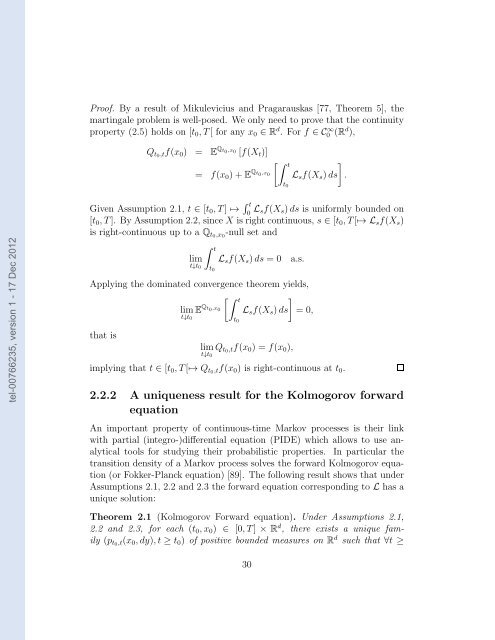

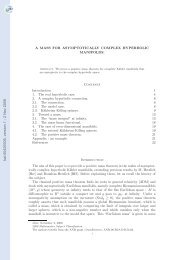
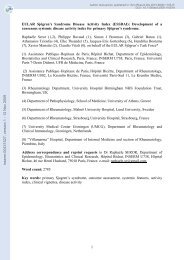
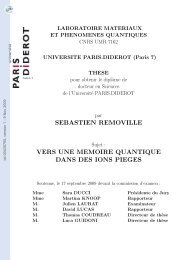
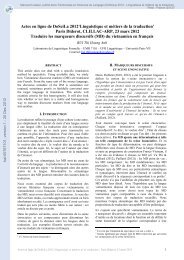
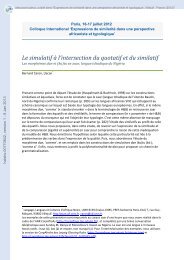
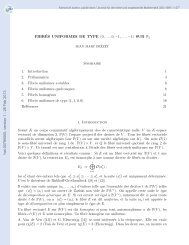
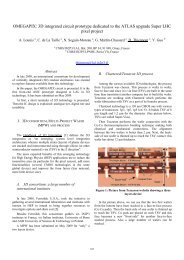
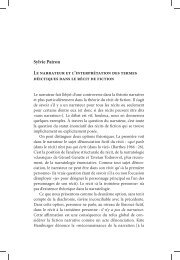
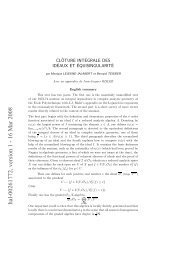
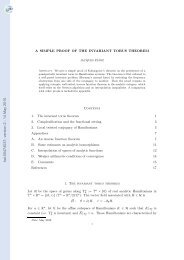
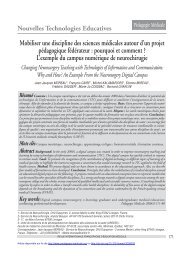

![[tel-00433556, v1] Relation entre Stress Oxydant et Homéostasie ...](https://img.yumpu.com/19233319/1/184x260/tel-00433556-v1-relation-entre-stress-oxydant-et-homeostasie-.jpg?quality=85)